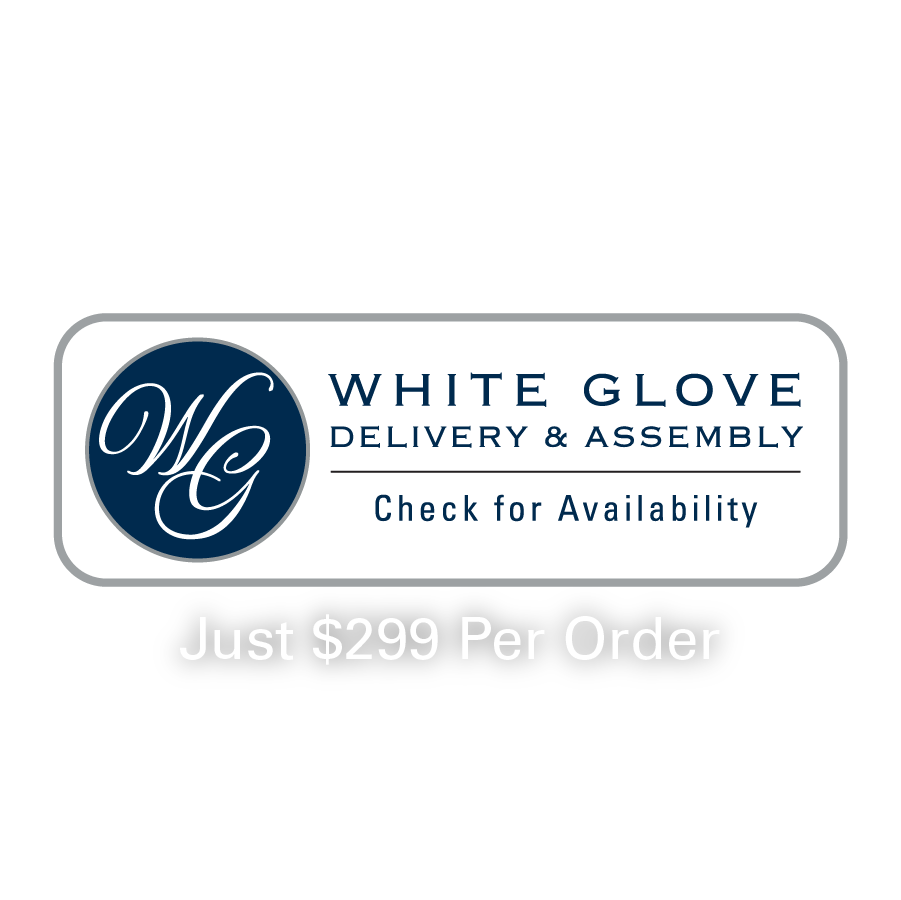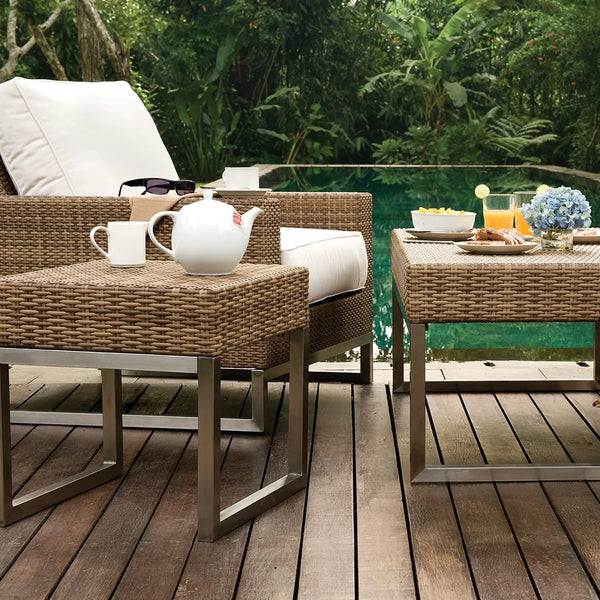The Thos. Baker Guide to Rattan vs Wicker Furniture
You’re not the only person who has been using ‘rattan’ and ‘wicker’ to talk about the woven, sleek furniture you’ve likely spotted in someone’s backyard. We often use ‘rattan furniture’ and ‘wicker furniture’ interchangeably, leading to confusion once you’re ready to start browsing for your perfect wicker fit.
Wicker is a contemporary furniture (with ancient origins!) staple for any and all outdoor settings, whether on your shining new patio or on the grassy lawn.
Wicker furniture’s popularity is on the rise, thanks to its stylistic diversity. It can be both sleek and chic, or even whimsical and tropical, and it comes in a variety of shapes and colors, making it easy to find the perfect fit for your outdoor space.
However, ‘rattan’ and ‘wicker,’ they can easily get mixed up. But when you’re looking to purchase new outdoor furniture for your home, it’s good to know the difference!

How Wicker Furniture Works
The word “wicker” is thought to have originated in Scandinavia, and means “to fold.” Wicker furniture is created through a weaving process similar to folding (or bending) flattened pieces of material, which is likely how the term came to be.
Sometimes wicker furniture is called rattan furniture, which is where the confusion comes in. Here, “rattan” refers to the material, not the process.
Although the word may have originated in Scandinavia, the art of wicker can be dated back five thousand years ago. Weaving became an everyday part of the homes and lifestyle of those in Egypt and some Native American tribes.
Wicker could become a type of carpet or cushion in the right craftsman’s hands, and it was effective for baskets that could carry harvests.
Since wicker furniture can be made of different materials, like the very recognizable rattan, or the very delicate willow, the material will alter not only the aesthetics of the furniture but also its durability.
Rattan is expressively common in contemporary furniture fashion, leading to the rise of the so-called, ‘rattan furniture,’ as rattan is one of the most durable fibers available.
Creating Rattan Material
Rattan only describes the material that is being used. During the weaving process, the rattan fibers can be heated to make them easier to manipulate, and when it is used in a wicker product, it will strengthen the piece altogether.
Rattan is actually a variation of vine that originates in tropical regions, such as Africa, Asia, or Australia. ‘Rattan’ refers to around 600 climbing palm plants that fall into the Calamoideae family.
With most of it coming from wild plants, rather than being grown commercially, supplies are growing more scarce.
To prepare it for all wicker creations, the skin is shaved off and then woven into wicker pieces. Rattan is left to dry in the sun and is then shipped off to manufacturers.
Natural wicker furniture breaks down quicker than its synthetic counterpart, meaning it will need consistent maintenance to keep in good shape, otherwise outdoor pests and fraying can affect the state of your furniture.
Natural rattan is porous, meaning it will absorb any of that dewy residue after rain. Consider your local environment to weigh the pros and cons of resin versus natural wicker.
You can maintain the quality of your natural wicker furniture with annual coats of primers or lacquer coats to prevent water damage and mildew.
Wipe down your furniture regularly to avoid dirt buildup, including any couch or seat pillows you may use for comfort. It might be best to save the natural rattan for indoors, however.

What about Resin Wicker?
Resin wicker and synthetic wicker mean the same thing, and both are not the same as natural rattan. Because of the nature of wicker material as a natural fiber, it is susceptible to fraying as it dries.
Resin Wicker was created as a synthetic alternative to provide the look and feel of rattan without the quick wear of the original material. It’s created from resin strands made of plant material and synthetic fibers, ex. polyethylene resin.
These strands can be woven just the way rattan can, meaning wicker furniture techniques can be replicated onto resin wicker material!
With added durability, resin wicker can be a better option for your outdoor furniture, especially considering weather changes and the typical outside wear-and-tear, such as moisture and mildew.
You’ll find that resin wicker also resists color fading, and does not need to be painted as the resin wicker itself is colored and subjected to light treatment which makes sure that the color holds up even through bright weather and wear.
Your resin wicker furniture is well on its way to lasting over a decade if maintained properly, and occasional strand breaks can be fixed at home without a professional.
Resin wicker is a great deal for those of you seeking something more durable for your outdoor area, but keep in mind you might find that wicker resin doesn’t quite live up to the look of natural resin.
Wicker Furniture in your Outdoors Area
If you’re ready to choose your wicker furniture, there are some additional factors that can help you narrow down your choices.
- A durable frame made from aluminum will keep your furniture from rusting. Powder-coated aluminum is available in a variety of colors, without the risk of flaking paint and with some prevention from oxidation.
However, the finish can be scratched, and the aluminum can’t be polished to fix the issue. Our Mia collection is powder-coated aluminum, while our Sonoma collection is powder-coated wrought iron. - Comfort! Wicker can be quite hard to sit on, and it’s a good idea to spruce up your furniture and outdoor area with some cushions and blankets. But just like rattan, fabric wears down.
Keep in mind what sort of weather is common in your region and pick fabrics that will hold up well in between washes. When in doubt, you’re likely to find cushions to accompany your new furniture at the store where you made your purchase.
All of our furniture frames requiring a cushion are priced and shipped with a standard cushion in a canvas white fabric. All materials used in our outdoor cushions are developed to withstand the elements, including UV sunlight, and have effective draining when wet. -
As mentioned before, rattan is a rapidly dwindling supply of material. When planning your purchases, consider purchasing furniture that focuses on giving back and maintaining the natural environment where rattan plants grow.
Recyclable and synthetic rattan are great options, such as Ecolene®. You can also browse matching, eco-friendly fabric options to go along with your new environmentally-friendly wicker furniture.
- If you’re opting for resin wicker, HDPE might be the better option long term. PVC is lightweight and has a low production cost, but HDPE is lighter, sturdier, and also more resistant to higher temperatures. It is also eco-friendly and recyclable. If environmentally friendly is on your checklist, HDPE is for you.
Keep in mind: don’t leave your natural rattan outside permanently, and clean it regularly.
Wicker furniture’s popularity has been around for thousands of years — and for good reason. Today, wicker is commonly used to accentuate a tropical or contemporary look. It's now more accessible than ever!
Great looks aside, with the right care, your pieces are bound to stay sleek for many years to come!
Check out or stunning wicker collections...



